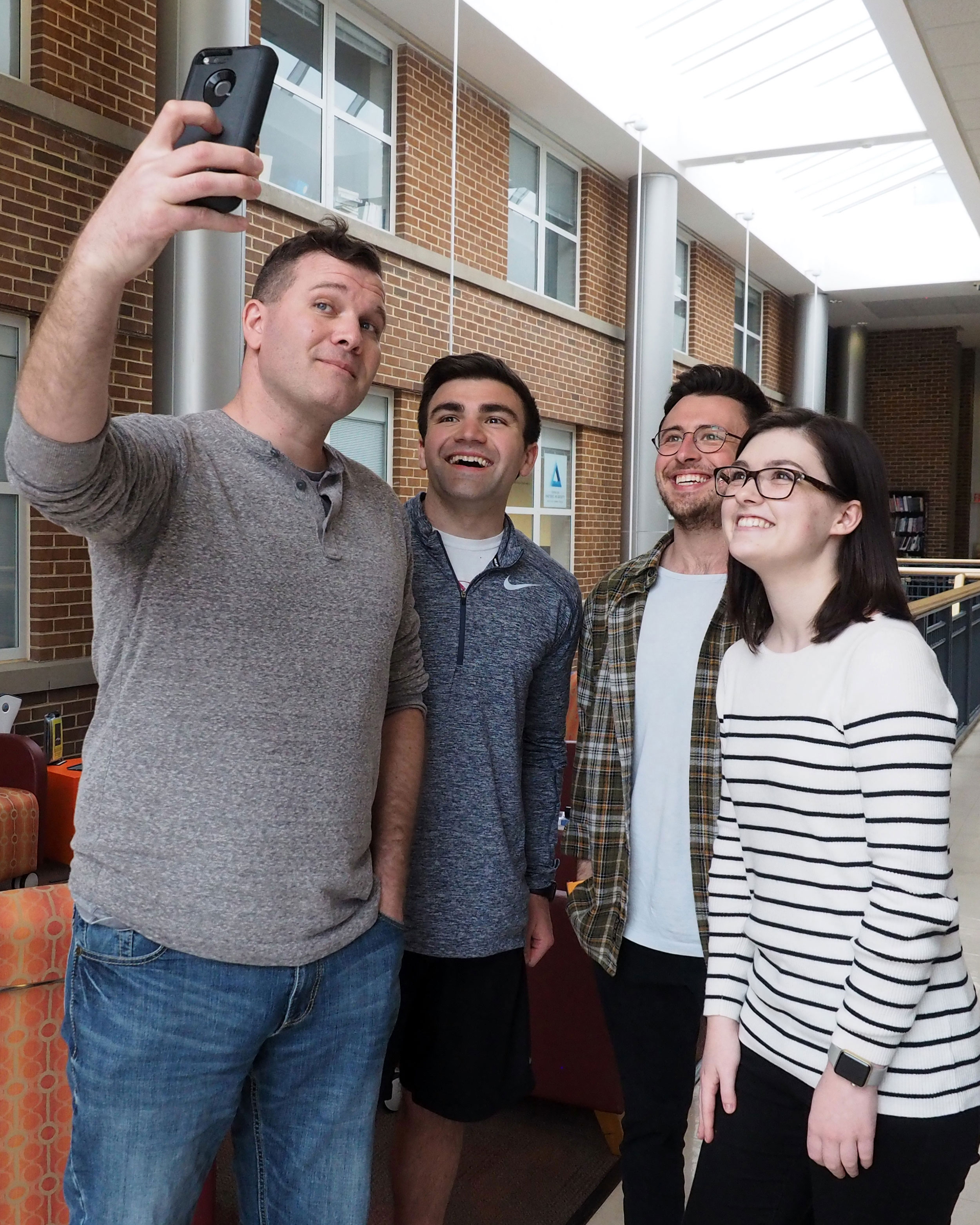During the past decade, advancements in technology and the popularity of social media have propelled self-taken portraits, aka selfies, to their status as a cultural phenomenon.
There are online guides for capturing the perfect selfie and an array of tools one can purchase to bolster that effort. There’s even a cellphone attachable tennis ball aimed at attracting your pet’s attention for the perfect proud-pet-owner selfie.
The word itself has become so popular it was named Oxford Dictionaries 2013 Word of the Year, and National Selfie Day is celebrated annually on June 21.

So how did we get here, and better yet, why?

Virginia Tech Magazine reached out to James Ivory, an associate professor in Virginia Tech’s Department of Communication to learn more. According to Ivory, the selfie trend may be recent, but its roots are not.
“I think the selfie phenomenon is a good example of how society and technology alternately influence each other, rather than technology always influencing society or vice versa.
On the one hand, the simplest explanation for the proliferation of selfies is that this is the first time in history that so much of the population has both high-quality camera technology and online publishing access on their persons in the form of modern mobile phones. Technology has enabled us to document life—including ourselves—more readily than ever before.
I think there is a little bit more to the explanation, though. Just because we have high-quality mobile phone cameras and instant Internet access doesn’t mean we have to take pictures of ourselves. So why do we use this unprecedented technology for ‘selfies’ so often? Some are tempted to say the selfie culture is evidence of youth narcissism, social media addiction, or any number of other pathologies, but historical anecdotes suggest any other generation may have done the same given the opportunity.
It has long been a custom for the more well-off, of course, to sit for expensive portraits to adorn their walls, and others throughout history have gone to great trouble to secure a self-portrait. In the early days of photography, when all aspects of the process were slow and expensive, even the ascetically untamed West saw successful photographers make a living selling self-portraits in areas where only a select few luxuries were in demand. Victorian-era families were also known to sit for photos with a recently-deceased loved one to capture their likenesses after death; it is notable that rather than featuring the dead alone, many such photos included the living and dead together in close and loving poses. Thus, even these postmortem photos suggest a desire for the bereaved to immortalize their own likenesses along with the images of lost loved ones.
So, say what you will about young men and women striking poses in front of the mirror, but I have a feeling that if Renaissance bluebloods, 19th-century cowboys and outlaws, and Victorian mothers and fathers had been able to snap a few selfies, they certainly would have as well. Further, of all the features that can be squeezed into your compact smartphone, the fact that most use some of that valuable hardware real estate for a good camera is probably evidence that humankind desires access to one—and maybe always has.”
Say cheese Snap a Virginia Tech selfie of you, your family, or your friends and email it to vtmag@vt.edu. You may find your smile featured online or in a future edition of the printed magazine.
